Hi people, for a consolidated thread, pls do post all your general information and fact sheets here for all aquatic flora and fauna including all other related information for both fresh water and marine set up. Thanks.
Pls. don't forget to acknowledge the source of your info.
As much as possible information should include, but not limited to the following:
For Fauna:
Common Name:
Scientific Name:
Local Name:
Origin:
Life Span:
Temperament:
Tank Compatibility Issue (for both Flora and Fauna):
Freshwater/Brackish/Marine:
Water pH:
Water Hardness:
Schooling/Non-schooling:
Common Illness/Problems:
Growth:
Length/Size:
Difficulty:
Water Current/Movement Issues:
General Description:
Other Important Information:
For Flora:
Common Name:
Scientific Name:
Local Name:
Origin:
Light Level:
CO2 Requirement (Y/N):
Fertilizer Requirement (Y/N):
Life Span:
Freshwater/Brackish/Marine:
Water pH:
Water Hardness:
Common Illness/Problems:
Growth:
Length/Size:
Difficulty:
Water Current/Movement Issues:
General Description:
Other Important Information:
For all other information (i.e., substrate, rocks, woods, tanks, filters, protein skimmer, lights, etc.), just post it as deemed best way to present..
We can number the topics ex.:
Topic #1: Gambusia Affinis
(details as discussed above will follow)
Topic #2: Red Ear Slider
(details as discussed above will follow)
Topic #3: Crazy Fish
(details as discussed above will follow)
what do you think?
Thread Contents: (This list is updated from time to time.)
Flora #
1.Microsorum pteropus
2.Anubias spp.
3.Hygrophila difformis
4.Bacopa monnieri
5.Monosolenium tenerum
6.Riccia fluitans
7.Hemianthus callitrichoides
8.Taxiphyllum barbieri 'Java Moss'
9.Vesicularia dubyana 'Christmas Moss'
10.Vesicularia ferriei 'Weeping Moss'
11.Taxiphyllum alternans 'Taiwan Moss'
12.Taxiphyllum sp. 'Flame Moss'
13.Hygrophila polysperma
14.Echinodorus Bleheri
15.Echinodorus cordifolius
16.Echinodorus osiris
17.Echinodorus Ozelot
18.Echinodorus tenellus
19.Sagittaria Subulata
20.Sagittaria platyphylla
21.Vallisneria americana
22.Vallisneria nana
23.Bacopa australis
24.Bacopa caroliniana
25.Bolbitis heudelotii
26.Cabomba caroliniana
27.Cabomba piauhyensis
27(repeated # mistake).Nymphaea lotus 'Zenkeri'
27(repeated # mistake).Rotala wallichii
28.Rotala vietnam
29.Rotala nanjenshan
30.Echinodorus parviflorus 'Tropica'
31.Blyxa japonica
32.Didiplis diandra
33.Elatine triandra
34.Hottonia palustris
35.Lobelia cardinalis
36.Micranthemum umbrosum
37.Polygonum sp.
38.Glossostigma elatinoides
39.Marsilea hirsuta
40.Ludwigia arcuata
41.Ludwigia glandulosa
42.Eleocharis vivipara
43.Eleocharis aciculares
44.Hydrocotyle leucocephala
45.Hydrocotyle verticillata
46.Hygrophila corymbosa sp.
47.Hygrophila balsamica
48.Hygrophila difformis (same as Flora #3)
49.Barclaya longifolia
50.Cryptocoryne crispatula 'balansae'
51.Cryptocoryne beckettii 'petchii'
52.Cryptocoryne parva
53.Cryptocoryne undulata sp.
54.Cryptocoryne wendtii sp.
55.coryne x willisii
56.Cryptocoryne affinis
57.Cryptocoryne albida
58.Cryptocoryne cordata
59.Rotala rotundifolia
60.Heteranthera zosterifolia
61.Pogostemon helferi
62.Rotala Macranda
63.Echinoduros rubin
64.Eleocharis parvula
65.Limnophila 'guinea'
66.Limnophila aquatica
67.Limnophila aromatica
68.Lilaeopsis brasiliensis
69.Ludwigia ovalis
70.Ludwigia inclinata
71.Ludwidgia repens
72.Hemianthus micranthemoides
73.Myriophyllum tuberculatum
74.Proserpinaca Palustris
75.Hygrophilia Corymbosa 'Angustifolia'(refer to Flora# 46 for Hygrophila corymbosa sp.)
76.Hygrophila sp. Thai stricta
77.Nesaea sp.
78.Nymphaea lotus (zenkeri)
79.Hydrotriche hottoniiflora
80.Nesaea pedicellata
81.Rotala sp. mini type 2
82.Rotala mexicana 'araguaia'
83.Rotala mexicana 'goias'
Fauna #
1.Red Cherry Shrimps
2.Chinese Fire Belly Newt
3.Dwarf Gourami
4.Siamese fighting fish
5.Ninja Shrimp
6.Kawa-anago
7.Thai Catfish
8.Wild Guppy
9.Discus Fish
10.Red-Eared Slider
11.Cardinal Tetra
12.Neon Tetra
13.German Blue Ram Cichlid
14.Zebra Nerite Snail
15.Flowerhorn cichlid
16.Golden Oto Catfish
17.Siamese algae eater
18.Rummy-nose tetra
19.Local Ghost Shrimp
20.Red-Tailed Black Shark
21.Head and Tail Light Tetra
22.Angel Fish
23.Black Neon Tetra
24.African Red Jewel Cichlid
Acknowledgment:
All materials posted on this thread were taken from various sources like books, internet, catalogues, and the internet, i.e., Wikipedia, Tropica Aquarium Plants Catalogue, Encyclopedia of Aquarium Plants, Aquatic Moss. How to grow Aquatic Moss. Info on Java Moss, Christmas Moss, Taiwan Moss, Peacock Moss, Stringy Moss, The Planted Tank - Articles, Forums, Pictures, Links, Aquatic Plant Central, Image hosting, free photo sharing & video sharing at Photobucket, Welcome to Badman's Tropical Fish, Tropical Fish, Aquarium Fish, Care for Saltwater and Freshwater Fish, Aquarium Setup, Dog, Cat, and Pet Care Tips, Health and Behavior Information by Veterinarians, Bubbles Aquarium, Age of Aquariums - Tropical Fish, PlantGeek.net - Your Aquatic Plant Resource, and others..
Results 1 to 10 of 193
-
10-28-2009, 08:52 PM #1
 ACE: Aquatic Flora, Fauna and other General Information
ACE: Aquatic Flora, Fauna and other General Information
Last edited by gaevwa; 01-04-2010 at 03:46 PM.
-
11-25-2009, 07:51 PM #2
 Java Fern
Java Fern
Flora #1: Microsorum pteropus

Common Name: Java Fern
Scientific Name: Microsorum pteropus
Local Name: Java Fern
Origin: Southeast Asia
Native to Philippines (Y/N): Y
Light Level: Very Low
CO2 Requirement (Y/N): N
Fertilizer Requirement (Y/N): N
Life Span:
Freshwater/Brackish/Marine: Freshwater
Water pH: 5.0 - 8.0
Water Hardness:
Common Illness/Problems:
Growth: Very Slow
Length/Size: 10 - 20 + cm
Difficulty: Very Easy
Tank Position: Mid-Ground
Water Current/Movement Issues:
General Description:
These plants have rhizomes (thick, rounded, horizontal stems) that do not like to be planted into the gravel, they prefer to be attached to rock or driftwood as well with the methods mentioned above. To get new plants, cut a healthy larger rhizome at a 45 degree angle with a sharp straight edge razor blade.
There are many varieties like Narrow Java fern, Philippine Java fern, Windelov Java fern, java fern mini and others..
Other Important Information:Last edited by gaevwa; 12-09-2009 at 09:56 AM.
-
11-25-2009, 08:08 PM #3
Flora #2: Anubias Anubias spp

Common Name: Anubias minima, Coffee Anubias, Marbled Nana, Petite Nana, Anubias Congensis
Scientific Name: Anubias minima, Anubias barteri, Anubias congensis, other Anubias species
Local Name: Anubias
Origin: West Africa
Native to Philippines (Y/N): N
Light Level: Very Low to Low
CO2 Requirement (Y/N): N
Fertilizer Requirement (Y/N): N
Life Span:
Freshwater/Brackish/Marine: Freshwater
Water pH: 5.0 - 8.0
Water Hardness:
Common Illness/Problems:
Growth: Very Slow
Length/Size:
Difficulty: Very Easy
Tank Position: Mid-Ground
Water Current/Movement Issues:
General Description:
Anubias aquarium plants are best planted in a shady spot or low light to restrict algae growth on the leaves. Anubias is also suitable for terrarium plantings as well. Herbivorous fish and otherwise aggressive Cichlids do not usually eat the very tough and robust leaves. Propagation of this plant is done by simply cutting the plant at the root (rhizome) with a very sharp pair of scissors.
Anubias will root onto wood or rough rocks. But unlike African ferns, anubias will grow an extensive root system into your gravel. Keep that rhizome above your gravel. Anubias grows much better when the light hits its rhizome.
Other Important Information:
Flora #3: Hygrophila difformis

Common Name: Water Wisteria, Hygrophila difformis
Scientific Name: Hygrophila difformis
Local Name: Water Wisteria, Hygrophila difformis
Origin: Asia
Native to Philippines (Y/N): Y
Light Level: Medium to Very High
CO2 Requirement (Y/N): Y
Fertilizer Requirement (Y/N): N
Life Span:
Freshwater/Brackish/Marine: Freshwater
Water pH: 5.0 - 9.0
Water Hardness: Very Soft-Very Hard
Common Illness/Problems:
Growth: Fast
Length/Size: 20-50 cm
Difficulty: Easy
Tank Position: Background
Water Current/Movement Issues:
General Description:
Hygrophila difformis is a plant for beginners which can help create a balance in the aquarium from the start. Its rapid growth helps prevent algae because the plant absorbs a great number of nutrients from the water. The shortage of micro-nutrients leads to pale leaves, which may indicate that the aquarium needs fertiliser.
Other Important Information:
Flora #4: Bacopa monnieri
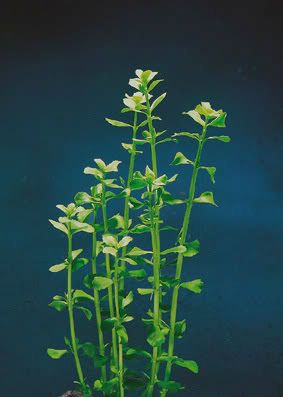
Common Name: Coastal Waterhyssop, Brahmi, Thyme-leafed gratiola, Water hyssop, Moneywort
Scientific Name: Bacopa monnieri
Local Name: Bacopa monnieri
Origin: West Africa
Native to Philippines (Y/N): N
Light Level: High to Very High
CO2 Requirement (Y/N): Y
Fertilizer Requirement (Y/N): N
Life Span:
Freshwater/Brackish/Marine: Freshwater
Water pH: 6.3 - 8.8
Water Hardness:
Common Illness/Problems:
Growth: Slow
Length/Size: 25-50 cm
Difficulty: Easy
Tank Position: Background
Water Current/Movement Issues:
General Description:
Bacopa monnieri is an easy and highly recommended plant which thrives in almost all conditions. It is a plant which is suitable for the hard water found in many European aquariums. Propagate by cuttings; take a side shoot or terminal bud and plant it in the bottom. Most beautiful when a great number of shoots are planted in a group.
Other Important Information:Last edited by gaevwa; 12-04-2009 at 09:27 PM.
-
11-25-2009, 08:49 PM #4
Flora #5: Monosolenium tenerum

Common Name: Pelia, Pellia
Scientific Name: Monosolenium tenerum
Local Name: Pelia, Pellia
Origin: Asia
Native to Philippines (Y/N): N
Light Level: Very Low to Very High
CO2 Requirement (Y/N): Y
Fertilizer Requirement (Y/N): N
Life Span:
Freshwater/Brackish/Marine: Freshwater
Water pH: 5 - 8
Water Hardness:
Common Illness/Problems:
Growth: Medium
Length/Size: 2-5 cm
Difficulty: Easy
Tank Position: Foreground
Water Current/Movement Issues:
General Description:
Monosolenium tenerum is an attractive liverwort, which looks most like a giant Riccia that simply stays at the bottom, where it forms cushions. It is a brittle plant, and pieces break off easily, so it is best to place it in the aquarium attached to stones with fishing line or in small clumps among other plants. Once Monosolenium tenerum has established itself, it is very undemanding. This plant is mistakenly known as Pellia.
Other Important Information:
Flora #6: Riccia fluitans
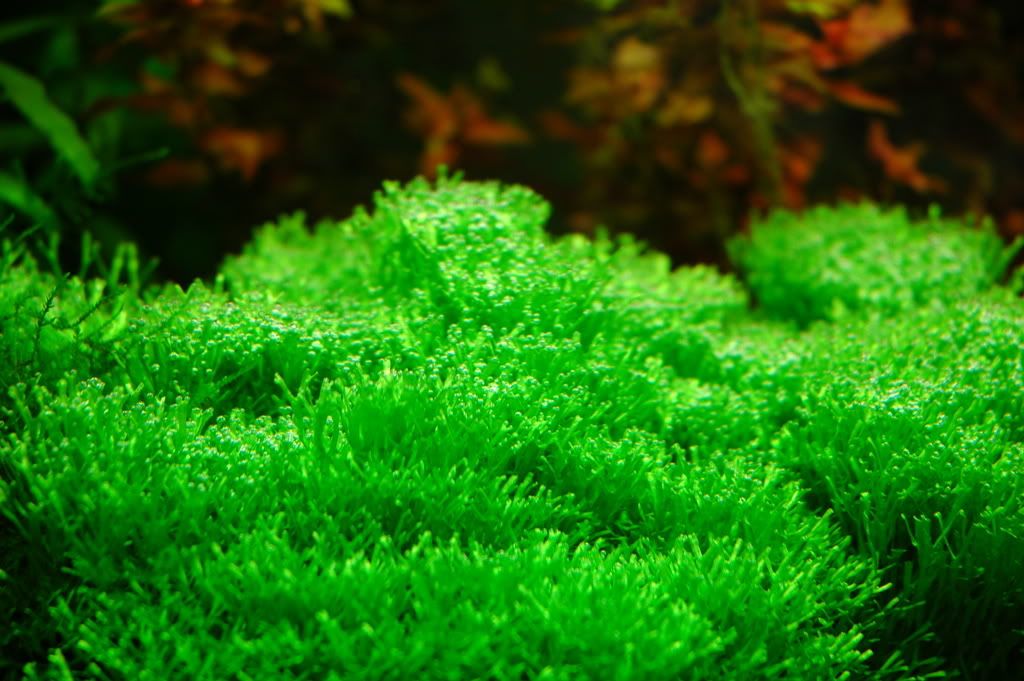
Common Name: Riccia
Scientific Name: Riccia fluitans
Local Name: Riccia
Origin: Worldwide
Native to Philippines (Y/N): N
Light Level: Medium to Very High
CO2 Requirement (Y/N): Y
Fertilizer Requirement (Y/N): N
Life Span:
Freshwater/Brackish/Marine: Freshwater
Water pH: 5 - 8
Water Hardness:
Common Illness/Problems:
Growth: Medium
Length/Size: 5 cm +
Difficulty: Easy
Tank Position: Foreground
Water Current/Movement Issues:
General Description:
Japanese Takashi Amano has inspired many aquarium owners to keep Riccia fl uitans submerged. It can be kept down by tying it to a stone with a piece of fi shing line, but new shoots always grow towards the surface, so it may be necessary to prune it with scissors. Under water Riccia fl uitans thrives best with added CO2 and in good growing conditions small oxygen bubbles form on the leaf tips. As a traditional fl oating plant offers good protection for young fish.
Other Important Information:
Flora #7: Hemianthus callitrichoides

Common Name: HC
Scientific Name: Hemianthus callitrichoides "cuba"
Local Name: HC
Origin: Cuba
Native to Philippines (Y/N): N
Light Level: Medium to Very High
CO2 Requirement (Y/N): Y
Fertilizer Requirement (Y/N): Y
Life Span:
Freshwater/Brackish/Marine: Freshwater
Water pH: 5 - 7.5
Water Hardness:
Common Illness/Problems:
Growth: Medium
Length/Size: 0.5 - 3 cm
Difficulty: Medium
Tank Position: Foreground
Water Current/Movement Issues:
General Description:
Hemianthus callitrichoides is one of the smallest aquarium plants in the world, and creeps over the bottom with millimetre-sized round leaves. If planted in small clumps a few centimetres apart, it will spread rapidly and cover the bottom like a carpet. Hemianthus callitrichoides is an attractive foreground plant for small aquariums, and makes few demands. Found on Cuba west of Havana.
Other Important Information:Last edited by gaevwa; 12-04-2009 at 09:27 PM.
-
11-25-2009, 09:07 PM #5
Flora #8: Taxiphyllum barbieri 'Java Moss'
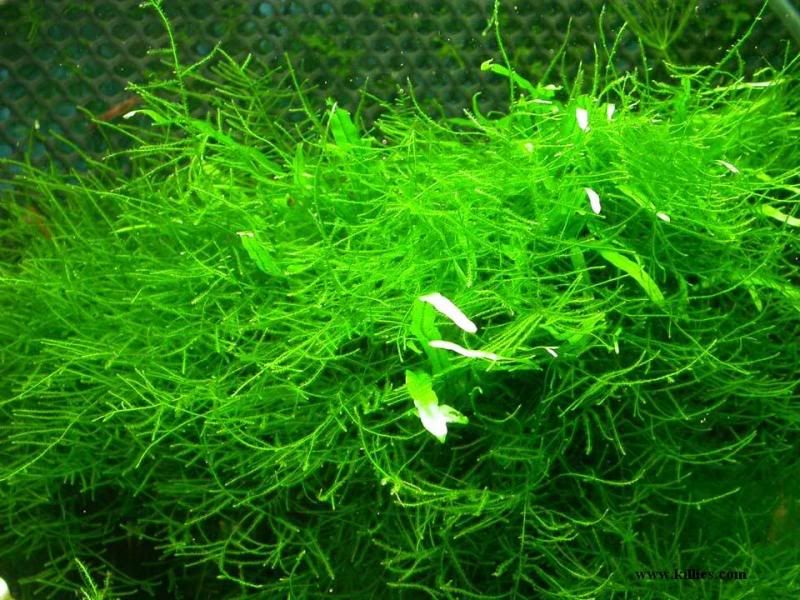
Common Name: Java moss
Scientific Name: Taxiphyllum barbieri
Local Name: Java moss
Origin: Southeast Asia
Native to Philippines (Y/N): Y
Light Level: Low to Very High
CO2 Requirement (Y/N): N
Fertilizer Requirement (Y/N): N
Life Span:
Freshwater/Brackish/Marine: Freshwater
Water pH: 5 - 9
Water Hardness:
Common Illness/Problems:
Growth: Medium
Length/Size: 5 cm +
Difficulty: Very easy
Tank Position: Foreground
Water Current/Movement Issues:
General Description:
Java moss is a hardy plant which makes few demands on the water or light. The moss grows willingly on any surface, so it is ideal for decorating stones and tree roots or concealing installations in the aquarium. Attach the plant with a piece of fi shing line until it has gained a hold on the bottom. If its growth becomes too luxuriant, it can be pruned with scissors. In breeding aquariums Taxiphyllum barbieri is a wonderful hiding place for the young fish.
Other Important Information:
Flora #9: Vesicularia dubyana 'Christmas Moss'
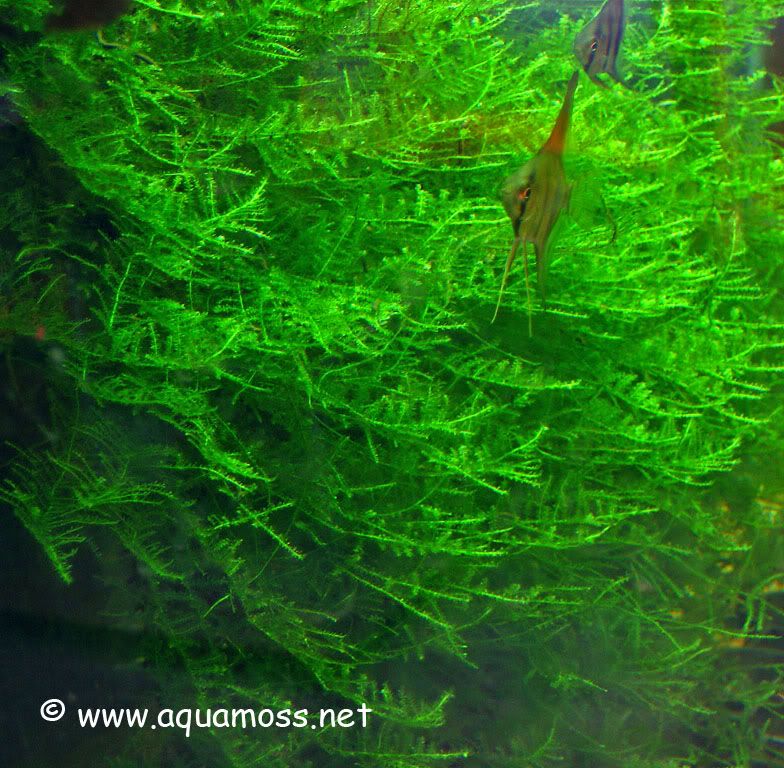
Common Name: Christmas moss
Scientific Name: Vesicularia dubyana 'Christmas'/ others identified it as Vesicularia montagnei
Local Name: Christmas moss
Origin: South America
Native to Philippines (Y/N):
Light Level: Low to Very High
CO2 Requirement (Y/N): N
Fertilizer Requirement (Y/N): N
Life Span:
Freshwater/Brackish/Marine: Freshwater
Water pH: 5 - 9
Water Hardness:
Common Illness/Problems:
Growth: Medium
Length/Size: 3 - 5 cm +
Difficulty: Very easy
Tank Position: Foreground
Water Current/Movement Issues:
General Description:
A special moss originally seen in Japanese aquariums and known as ‘’Amazonia Willow Moss’’. Also called ‘’Christmas tree moss’’, because of its side branch structure which distinguishes it from ordinary Taxiphyllum barbieri (Java moss) and looks like fi r tree branches. It is more demanding than ordinary Java moss and grows more slowly. It attaches readily to roots and stones, and as it spreads in the water it needs pruning to keep its shape attractive.
Other Important Information:
Flora #10: Vesicularia ferriei 'Weeping Moss'

Common Name: Weeping moss
Scientific Name: Vesicularia ferriei/ others identified it as Taxiphyllum ferriei
Local Name: Weeping moss
Origin: China
Native to Philippines (Y/N):
Light Level: Medium to Very High
CO2 Requirement (Y/N): N
Fertilizer Requirement (Y/N): N
Life Span:
Freshwater/Brackish/Marine: Freshwater
Water pH: 5 - 9
Water Hardness:
Common Illness/Problems:
Growth: Slow
Length/Size: 5 cm +
Difficulty: Medium
Tank Position: Foreground
Water Current/Movement Issues:
General Description:
A recently introduced aquarium moss from mainland China is the Weeping Moss. The fronds of this moss droop like the branches of a weeping willow tree. The overall leaf shape approach that of Christmas Moss, but the leaf is about half the size and is without an abruptly short and sharp apex.
It makes an amazing plant for your driftwood, rocks or moss walls (just tie it with fishing line). The weeping moss is really easy to grow and makes an ideal choice for the low maintenance tank.
Other Important Information:
Flora #11: Taxiphyllum alternans 'Taiwan Moss'

Common Name: Taiwan moss
Scientific Name: Taxiphyllum alternans
Local Name: Taiwan moss
Origin: Taiwan
Native to Philippines (Y/N):
Light Level: Low to Very High
CO2 Requirement (Y/N): N
Fertilizer Requirement (Y/N): N
Life Span:
Freshwater/Brackish/Marine: Freshwater
Water pH: 5.5 - 9
Water Hardness:
Common Illness/Problems:
Growth: Fast
Length/Size: 5 cm +
Difficulty: Easy
Tank Position: Foreground
Water Current/Movement Issues:
General Description:
Easy plant to care for. Tie it to driftwood or rocks and it will grow on it. Tie it to a piece of slate and place it in the foreground for a foreground moss slate. Moss with thicker fronds than Java Moss
Other Important Information:
Flora #12: Taxiphyllum sp. 'Flame Moss'

Common Name: Flame moss
Scientific Name: Taxiphyllum sp.
Local Name: Flame moss
Origin:
Native to Philippines (Y/N):
Light Level: Low to Very High
CO2 Requirement (Y/N): N
Fertilizer Requirement (Y/N): N
Life Span:
Freshwater/Brackish/Marine: Freshwater
Water pH: 5.5 - 9
Water Hardness:
Common Illness/Problems:
Growth: Fast
Length/Size: 5 cm +
Difficulty: Easy
Tank Position: Foreground
Water Current/Movement Issues:
General Description:
The Flame Moss is a very interesting moss as the 'fronds' do not branch out extensively like the other Taxiphyllum species, but grow straight up. Flame moss is an easy to grow moss that has strands growing verticle and bending like a flame. Needs low to bright light and grows either without or with added C02. Attach to wood or rock.
Other Important Information:Last edited by gaevwa; 12-04-2009 at 09:30 PM.
-
11-26-2009, 05:48 PM #6
Flora #13: Hygrophila polysperma
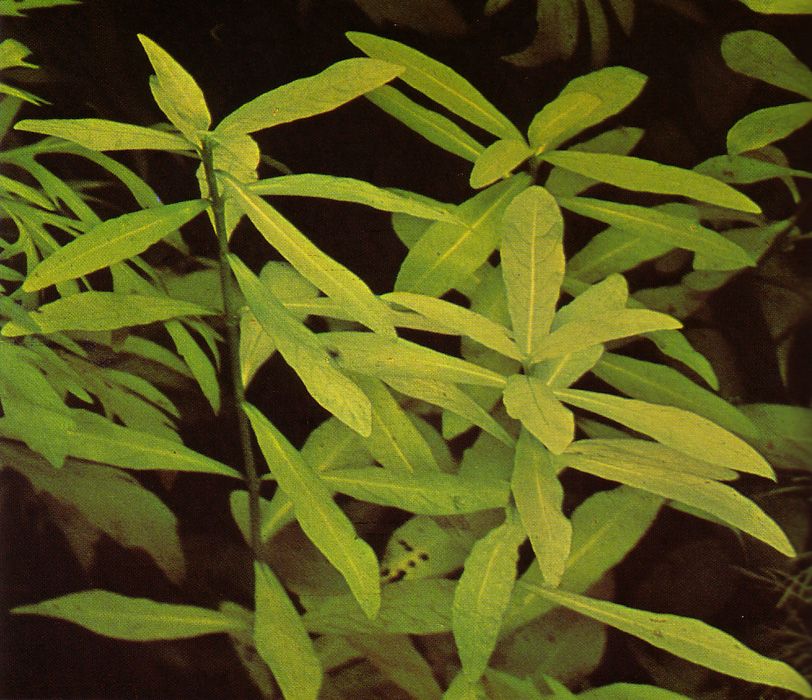
Common Name: Dwarf hygro, Miramar weed, Indian waterweed, rosanervig
Scientific Name: Hygrophila polysperma
Local Name: Dwarf hygro, Miramar weed, Indian waterweed, rosanervig, big leaf
Origin: Southeast Asia
Native to Philippines (Y/N):
Light Level: Low to Very High
CO2 Requirement (Y/N): N
Fertilizer Requirement (Y/N): N
Life Span:
Freshwater/Brackish/Marine: Freshwater
Water pH: 5 - 9
Water Hardness:
Common Illness/Problems:
Growth: Fast
Length/Size: 25 - 40 cm
Difficulty: Easy
Tank Position: Background
Water Current/Movement Issues:
General Description:
Hygrophila polysperma is one of the hardiest aquarium plants available. It is particularly good for beginners because it grows in almost all conditions. It normally grows so fast that it is important to prevent it crowding out other plants. The shoots must be pinched out regularly. Leaves lying on the surface form small new plants. Hygrophila polysperma varies considerably in leaf shape and colour, depending to some extent on the light supplied.
Other Important Information:
Flora #14: Echinodorus Bleheri
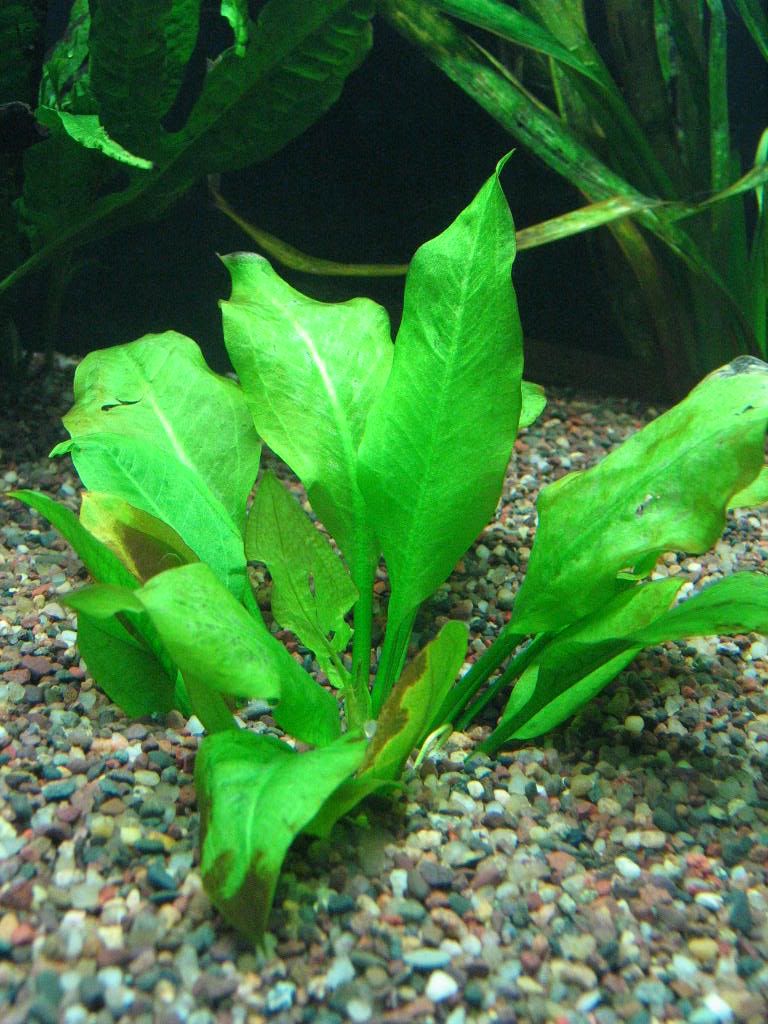
Common Name: Amazon Sword Plant, Paniculatus
Scientific Name: Echinodorus Bleheri (bleherae), Echinodorus Paniculatus, Echinodorus Pangeri
Local Name: Amazon Sword Plant
Origin: South America (Amazon River)
Native to Philippines (Y/N): N
Light Level: Low to Very High
CO2 Requirement (Y/N): N
Fertilizer Requirement (Y/N): N
Life Span:
Freshwater/Brackish/Marine: Freshwater
Water pH: 5.5 - 9
Water Hardness:
Common Illness/Problems:
Growth: Medium to Fast
Length/Size: 20 - 50 cm
Difficulty: Medium
Tank Position: Mid-ground
Water Current/Movement Issues:
General Description:
This beautiful plant is usually utilised as a centre or focal plant in the aquarium as it gets to be quite large (as do some other Echinodorus species). Echinodorus bleheri is undemanding and beautiful. A nutritious bottom promotes growth, but the plant needs pruning to prevent it depriving plants underneath of light. Echinodorus bleheri does well even in poorly illuminated aquariums, as it grows towards the light. It is a hardy and easy solitary plant for both beginners and the more experienced with quite large aquariums. It has been sold under the name ‘’Paniculatus’’.
Other Important Information:
Flora #15: Echinodorus cordifolius

Common Name: Elephant Ear, Fluitans, Tropica Marble Queen
Scientific Name: Echinodorus cordifolius
Local Name: Elephant Ear, Fluitans, Tropica Marble Queen
Origin: South America (Amazon River)
Native to Philippines (Y/N): N
Light Level: Medium to Very High
CO2 Requirement (Y/N): N
Fertilizer Requirement (Y/N): N
Life Span:
Freshwater/Brackish/Marine: Freshwater
Water pH: 6 - 8
Water Hardness:
Common Illness/Problems:
Growth: Medium
Length/Size: 15 - 30 cm
Difficulty: Easy
Tank Position: Mid-ground
Water Current/Movement Issues:
General Description:
A comparatively fast-growing Echinodorus, suitable for large aquariums. Unlike other round-leafed varieties of the species, Echinodorus cordifolius ssp. fl uitans is less likely to grow up over the water surface. If it grows large enough, it forms large leaves just under the surface instead.
Other Important Information:
Flora #16: Echinodorus osiris

Common Name: Red Amazon Sword Plant, Echinodorus rubra, Echinodorus aureobrunata
Scientific Name: Echinodorus osiris
Local Name: Echinodorus osiris
Origin: South America (Amazon River)
Native to Philippines (Y/N): N
Light Level: High to Very High
CO2 Requirement (Y/N): Y
Fertilizer Requirement (Y/N): Y
Life Span:
Freshwater/Brackish/Marine: Freshwater
Water pH: 6 - 8
Water Hardness:
Common Illness/Problems:
Growth: Medium
Length/Size: 15 - 30 cm
Difficulty: Easy
Tank Position: Mid-ground
Water Current/Movement Issues:
General Description:
A nutritious bottom promotes growth, and when there is a shortage of micro-nutrients new
leaves turn pale, thus indicating that fertiliser may be necessary. It is generally an undemanding plant which is suitable for both soft and hard water. The red colour of the leaves grows stronger at higher light intensities. It used to be sold as Echinodorus rubra. It is not eaten by herbivorous fish.
Other Important Information:
Flora #17: Echinodorus Ozelot

Common Name: Ozelot
Scientific Name: Echinodorus 'Ozelot'
Local Name: Ozelot
Origin: South America (Amazon River)
Native to Philippines (Y/N): N
Light Level: Medium to Very High
CO2 Requirement (Y/N):
Fertilizer Requirement (Y/N):
Life Span:
Freshwater/Brackish/Marine: Freshwater
Water pH: 6 - 9
Water Hardness:
Common Illness/Problems:
Growth: Medium
Length/Size: 20 - 40 + cm
Difficulty: Easy
Tank Position: Mid to Background
Water Current/Movement Issues:
General Description:
Echinodorus ‘Ozelot’ is a decorative hybrid between Echinodorus schluteri ‘Leopard’ and Echinodorus x barthii. Naturally, it is the elliptical black spots on the red-brown leaves that have given this plant the name ‘Ozelot’. The spots are darkest on the youngest leaves, and unlike many other spotted Echinodorus, ‘Ozelot’ retains its spots even at low light intensity. It is an undemanding, good plant for beginners.
Other Important Information:
Flora #18: Echinodorus tenellus
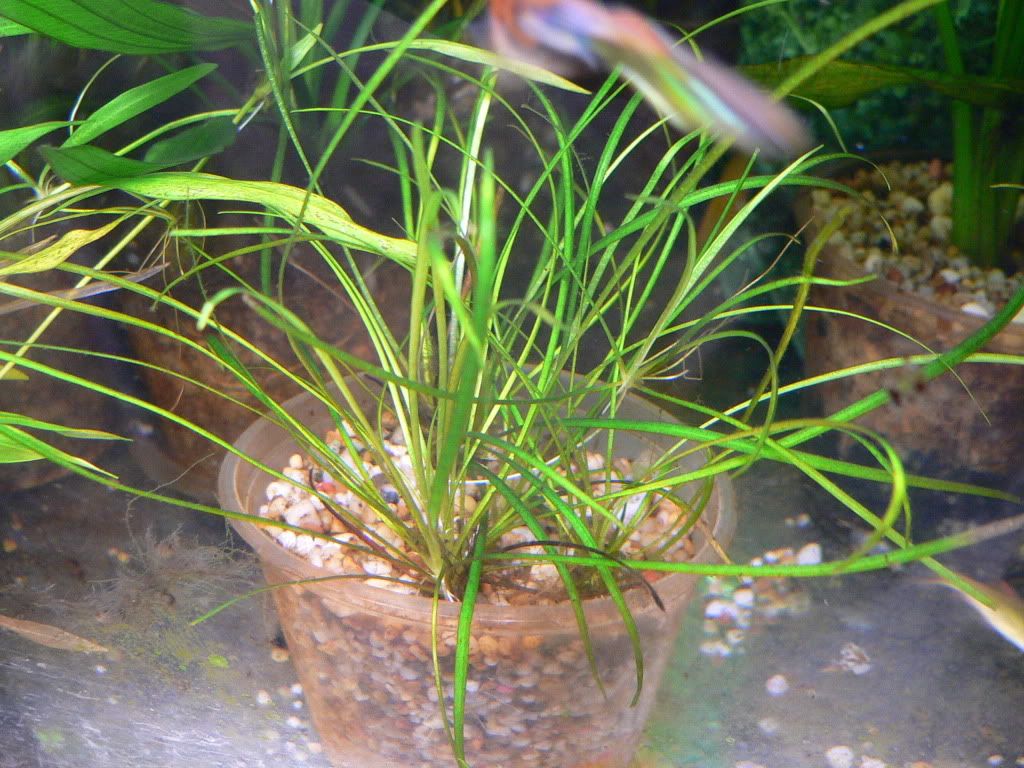
Common Name: Pygmy chain sword plant
Scientific Name: Echinodorus tenellus
Local Name: Echinodorus tenellus
Origin: North and South America
Native to Philippines (Y/N): N
Light Level: Medium to Very High
CO2 Requirement (Y/N):
Fertilizer Requirement (Y/N):
Life Span:
Freshwater/Brackish/Marine: Freshwater
Water pH: 5.5 - 8
Water Hardness:
Common Illness/Problems:
Growth: Medium
Length/Size: 5 - 10 cm
Difficulty: Medium
Tank Position: Foreground to Mid-ground
Water Current/Movement Issues:
General Description:
Small foreground plants for aquariums are in short supply, but Echinodorus tenellus is one of the best. The runners spread round the aquarium, and growth is more compact when planted in a pot or between stones or other objects. A true ‘’lawn’’ effect is only achieved at high light intensities, so you must make sure larger plants do not overshadow the plant. Plant individual plants a couple of centimetres apart (easiest with tweezers). A nutritious bottom promotes growth.
Other Important Information:Last edited by gaevwa; 11-26-2009 at 07:55 PM.
-
11-26-2009, 07:01 PM #7
Flora #19: Sagittaria Subulata

Common Name: Dwarf Sagittaria
Scientific Name: Sagittaria Subulata
Local Name: Sagittaria Subulata, Dwarf Sagittaria
Origin: North and South America
Native to Philippines (Y/N): N
Light Level: Medium to Very High
CO2 Requirement (Y/N):
Fertilizer Requirement (Y/N):
Life Span:
Freshwater/Brackish/Marine: Freshwater
Water pH: 6 - 9
Water Hardness:
Common Illness/Problems:
Growth: Fast
Length/Size: 5 - 30 + cm
Difficulty: Easy
Tank Position: Mid-ground to Background
Water Current/Movement Issues:
General Description:
Sagittaria subulata is an ideal, undemanding foreground plant whose short runners form a compact group. Place individual plants 2-4 cm apart. This plant may cause problems because in certain conditions it suddenly grows to a height of 50 cm when it grows older. But if it is then moved into the background it may become low again. In the aquarium it sometimes sends a long flower stem to the surface, and small white flowers unfold just above the water surface.
Other Important Information:
Flora #20: Sagittaria platyphylla

Common Name: Giant Sagittaria
Scientific Name: Sagittaria platyphylla
Local Name: Giant Sag
Origin: North and Central America
Native to Philippines (Y/N): N
Light Level: Low to Very High
CO2 Requirement (Y/N):
Fertilizer Requirement (Y/N): Y
Life Span:
Freshwater/Brackish/Marine: Freshwater
Water pH: 5.5 - 8
Water Hardness:
Common Illness/Problems:
Growth: Medium
Length/Size: 15 - 40 cm
Difficulty: Easy
Tank Position: Mid-ground to Background
Water Current/Movement Issues:
General Description:
Sagittaria platyphylla is an ideal foreground plant for large aquariums or in the middle of smaller aquariums. It forms a slightly dispersed group with its runners. A nutritious bottom promotes growth. If there is a shortage of micro-nutrients the plant turns pale, indicating that the aquarium may need fertiliser. This is a robust starter plant which is also suitable for the hard water.
Other Important Information:
Flora #21: Vallisneria americana

Common Name: Vallisneria mini twister, Vallisneria natans
Scientific Name: Vallisneria americana
Local Name: Vallisneria mini twister, Vallisneria natans
Origin: Southeast Asia
Native to Philippines (Y/N):
Light Level: Low to Very High
CO2 Requirement (Y/N):
Fertilizer Requirement (Y/N):
Life Span:
Freshwater/Brackish/Marine: Freshwater
Water pH: 6 - 9
Water Hardness:
Common Illness/Problems:
Growth: Fast
Length/Size: 10 - 50 + cm
Difficulty: Easy
Tank Position: Background
Water Current/Movement Issues:
General Description:
Vallisneria americana ‘’mini twister’’ is yet another graceful variety of Vallisneria americana. ‘’mini twister’’ is similar to Vallisneria americana var. biwaensis, but in a miniature version. ‘’mini twister’’ develops short, attractively twisted leaves, and can thus be placed between foreground and background plants. ‘’mini twister’’ is easy to grow and thrives even in less intensive light and without addition of CO2 to the water.
Vallisneria americana (natans) is a hardy plant for beginners. The leaves do not grow very long, which also makes it suitable for small aquariums. It has fi ne, narrow leaves so it does not overshadow other plants much. Easy to propagate using its many runners.
Other Important Information:
Flora #22: Vallisneria nana

Common Name: Vallisneria nana
Scientific Name: Vallisneria nana
Local Name: Vallisneria nana
Origin: Australia
Native to Philippines (Y/N):
Light Level: Medium to High
CO2 Requirement (Y/N):
Fertilizer Requirement (Y/N):
Life Span:
Freshwater/Brackish/Marine: Freshwater
Water pH: 6 - 8.5
Water Hardness:
Common Illness/Problems:
Growth: Medium
Length/Size: 30 - 50 + cm
Difficulty: Easy
Tank Position: Mid-ground to Background
Water Current/Movement Issues:
General Description:
Vallisneria nana is a solitary contrast plant with dark green, rosulate, narrow leaves. It is extremely suitable as a mid-ground plant, but can also be used as a background plant in small aquariums. The leaves are much narrower than with other species of Vallisneria, nor are they quite as long. In its natural habitat in northern Australia Vallisneria nana reaches a height of only 15 cm, but in aquariums it typically grows to 30-50 cm, which no doubt refl ects the different light and nutrient conditions. Vallisneria nana produces offshoots very readily, so compact vegetation will soon develop in good conditions. Vallisneria americana (natans) is a hardy plant for beginners. The leaves do not grow very long, which also makes it suitable for small aquariums. It has fi ne, narrow leaves so it does not overshadow other plants much. Easy to propagate using its many runners.
Other Important Information:Last edited by gaevwa; 11-26-2009 at 07:12 PM.
-
11-26-2009, 07:28 PM #8
Flora #23: Bacopa australis
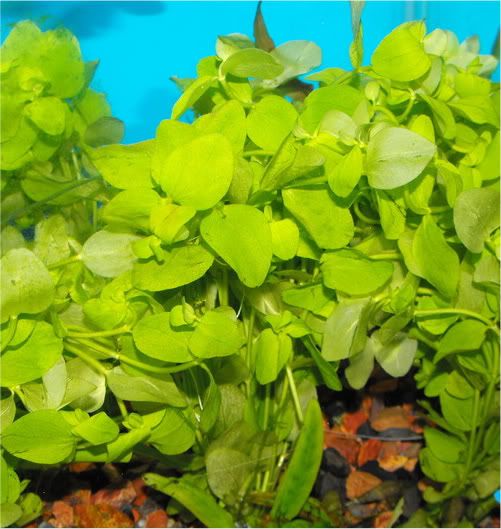
Common Name: Bacopa australis
Scientific Name: Bacopa australis
Local Name: Bacopa australis
Origin: South America (Brazil)
Native to Philippines (Y/N):
Light Level: Medium to High
CO2 Requirement (Y/N):
Fertilizer Requirement (Y/N):
Life Span:
Freshwater/Brackish/Marine: Freshwater
Water pH: 6 - 8
Water Hardness:
Common Illness/Problems:
Growth: Fast
Length/Size: 7 - 30 + cm
Difficulty: Easy
Tank Position: Mid-ground to Background
Water Current/Movement Issues:
General Description:
Bacopa australis was discovered in southern Brazil (australis = southern), and it does not come from
Australia, as might otherwise be assumed from its name. Like the other Bacopa-species, Bacopa australis is also easy to grow in an aquarium. Under certain conditions it creeps across the bottom to form an elegantly decorative light green cushion. When Bacopa australis grows in a good light, the leaves become reddish. It is easily propagated by taking side shoots and planting them in the substrate.
Other Important Information:
Flora #24: Bacopa caroliniana

Common Name: Bacopa caroliniana
Scientific Name: Bacopa caroliniana
Local Name: Bacopa caroliniana
Origin: North America
Native to Philippines (Y/N):
Light Level: Medium to High
CO2 Requirement (Y/N):
Fertilizer Requirement (Y/N):
Life Span:
Freshwater/Brackish/Marine: Freshwater
Water pH: 5 - 8
Water Hardness:
Common Illness/Problems:
Growth: Slow
Length/Size: 20 - 30 cm
Difficulty: Easy
Tank Position: Mid-ground to Background
Water Current/Movement Issues:
General Description:
Bacopa caroliniana has been used as an aquarium plant for many years. Apart from relatively good light it makes few demands. Its slow growth rate makes it one of the few stem plants that do not need much attention. Like most stem plants, it is most decorative when planted in small groups. Easy to propagate by cuttings; take a side shoot and plant it in the bottom.
Other Important Information:
Flora #25: Bolbitis heudelotii

Common Name: African fern, Congo fern
Scientific Name: Bolbitis heudelotii
Local Name: Bolbitis heudelotii, African fern, Congo fern
Origin: West Africa
Native to Philippines (Y/N): N
Light Level: Low to High
CO2 Requirement (Y/N): Y
Fertilizer Requirement (Y/N):
Life Span:
Freshwater/Brackish/Marine: Freshwater
Water pH: 5 - 7
Water Hardness:
Common Illness/Problems:
Growth: Slow
Length/Size: 15 - 40 cm
Difficulty: Medium to Difficult
Tank Position: Mid-ground to Background
Water Current/Movement Issues: Flowing
General Description:
A water fern with very beautiful transparent green leaves. When planting do not cover the rhizome because it will rot, and it is best to plant Bolbitis heudelotii on a root or stone. Keep the plant in position with fishing line until it has gained a hold. Easy to propagate by splitting the horizontal rhizome. Growth can be increased considerably by supplying CO2, and is only optimal in soft, slightly acidic water. Attaches itself to rocks and drift woods.
Other Important Information:Last edited by gaevwa; 11-30-2009 at 07:05 PM.
-
11-26-2009, 08:15 PM #9
Flora #26: Cabomba caroliniana
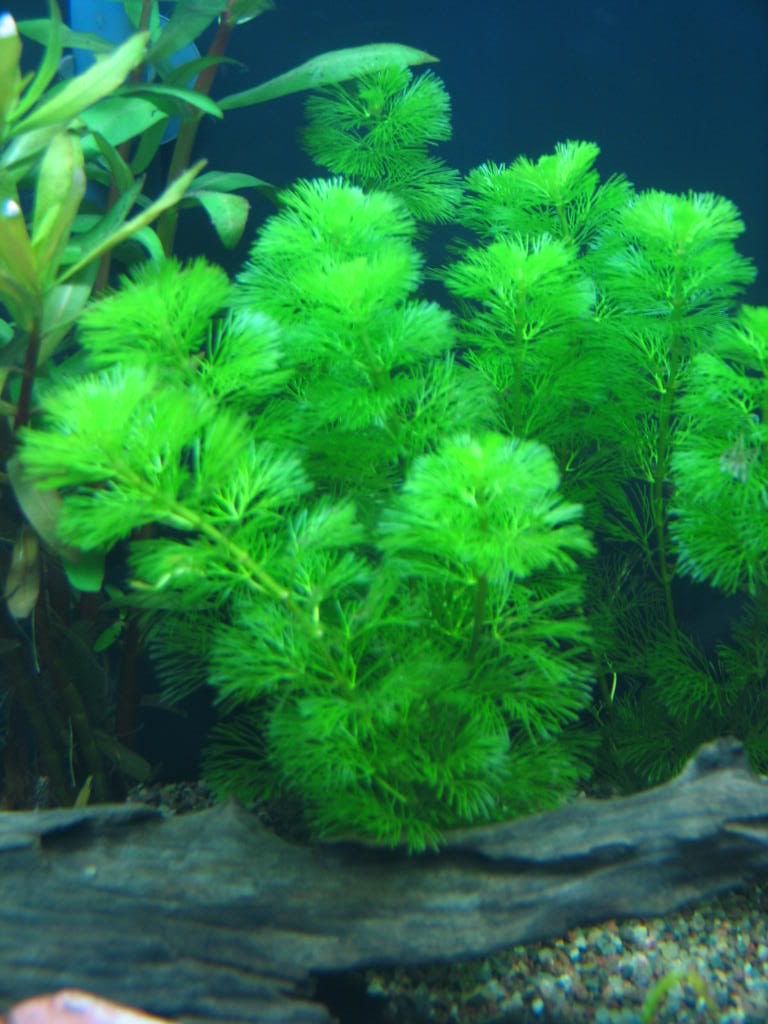
Common Name: Cabomba caroliniana, Cabomba
Scientific Name: Cabomba caroliniana
Local Name: Cabomba caroliniana, Cabomba
Origin: Central and South America
Native to Philippines (Y/N): N
Light Level: Medium to High
CO2 Requirement (Y/N):
Fertilizer Requirement (Y/N):
Life Span:
Freshwater/Brackish/Marine: Freshwater
Water pH: 4 - 7
Water Hardness:
Common Illness/Problems:
Growth: Fast
Length/Size: 30 - 80 + cm
Difficulty: Medium
Tank Position: Background
Water Current/Movement Issues:
General Description:
A water fern with very beautiful transparent green leaves. When planting do not cover the rhizome. A very popular aquarium plant owing to its beautiful foliage. The least demanding of the Cabomba-species, but still causes problems in poorly lit aquariums. Most decorative when planted in groups. Eaten locally as a vegetable.
Other Important Information:
Flora #27: Cabomba piauhyensis

Common Name: Red Cabomba
Scientific Name: Cabomba piauhyensis
Local Name: Red Cabomba
Origin: Central and South America
Native to Philippines (Y/N): N
Light Level: High to Very High
CO2 Requirement (Y/N): Y
Fertilizer Requirement (Y/N): Y
Life Span:
Freshwater/Brackish/Marine: Freshwater
Water pH: 6 - 7
Water Hardness:
Common Illness/Problems:
Growth: Fast
Length/Size: 30 - 80 + cm
Difficulty: Medium to Difficult
Tank Position: Background
Water Current/Movement Issues:
General Description:
The red cabomba is a demanding subject, but if given correct conditions and care, the result is a stunning aquarium plant that creates a strong impact in any planted aqquarium. To keep this plant at its best, it must have a good, preferably iron-rich substrate, strong lighting, regular fertilization, additional CO2, and ideally low pH (6-7)
Other Important Information:
-
11-28-2009, 09:28 PM #10
Fauna#1:Red Cherry Shrimps
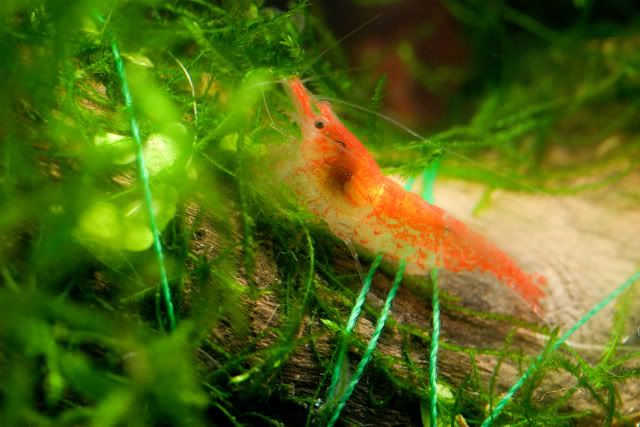
Common Name:Red Cherry Shrimps
Scientific Name:Neocaridina denticulata sinensis "red"
Local Name:Red Cherry Shrimps
Origin:Taiwan (this red variety does not occur naturally anywhere, but originally bred in Taiwan. Wild form occurs in Southern China and Taiwan).
Life Span:may live 1-2 years
Temperament:non-aggressive shrimp
Tank Compatibility Issue (for both Flora and Fauna):Small, non-aggressive fish such as the neon tetra and cardinal tetra, otocinclus catfish, and some species of killifish can be kept with cherry shrimp as well as dwarf gouramis.Java moss and Java fern are both excellent plants for the shrimp tank.Hornwort, water sprite, water hyacinth, and anacharis is also compatible.
Freshwater/Brackish/Marine:Freshwater
Water pH: pH of 6.5-8
Water Hardness:soft and slightly acidic or very hard and alkaline (is possible due to the adaptation ability of this shrimps).
Schooling/Non-schooling:
Common Illness/Problems: cherry shrimp are very sensitive to the presence of ammonia, nitrates, and most heavy metals (copper, zinc, lead, etc.). Placement in a tank which has not been properly cycled will quickly lead to illness and death, often with a few days, as does exposure to tap water run through copper pipes or otherwise contaminated with toxic metals or compounds.
Growth:
Length/Size: may reach about 4 cm (1.5 in) in length
Difficulty: Easy- Medium
Water Current/Movement Issues:
General Description:The red cherry shrimp is a red color variation of the dwarf shrimp Neocaridina denticulata sinensis, which hails from southern China, Taiwan and northern Vietnam and which has even been widely introduced into Hawaii. The red variety of the shrimp was originally bred in Taiwan. The red color variation of N. denticulata sinensis does not occur in the wild.
Other Important Information:
The red coloration of this shrimp depends on several factors such as mood, water conditions and food. Hence, when these shrimp first arrive in new aquaria after shipping, they have very little red on their bodies and most animals are extremely pale. The red coloration returns with time and when the shrimp finally settle in, they maintain their red coloration at all times. Young animals also need quite some time to become fully colored out. Females who are carrying eggs are especially deep red, whereas males tend to be much paler than females. However, females start carrying eggs before they are fully colored upBreeding red cherry shrimp is as simple as putting an adult male and female together in an aquarium. You can observe the eggs developing in the female's ovaries as a white or yellow triangular "saddle" marking on her back. When she is ready to lay the eggs, she releases pheromones into the water to signal her availability to males. The male shrimp in the tank will often become agitated, swimming very actively about as they search for the source of the pheromones. After a brief mating process, the female lays her eggs and affixes them to her swimmerettes.
The eggs turn darker and darker until the young shrimp hatch after about three weeks. When the young hatch, they are tiny (~1 mm) copies of the adults. They have no planktonic larval stage. They spend their first few days of life hiding among plants, where they are almost invisible, nibbling on the biofilm on the plants. They then emerge and graze on algae on tank surfaces and ornaments.
References:
courtesy of istoryan named as persephone. (sorry because I didn't ask permission, hehe..).
http://en.wikipedia.org/wiki/Neocari...ulata_sinensis
http://i840.photobucket.com/albums/z...felmalercs.jpg
Advertisement
Similar Threads |
|







 Reply With Quote
Reply With Quote
